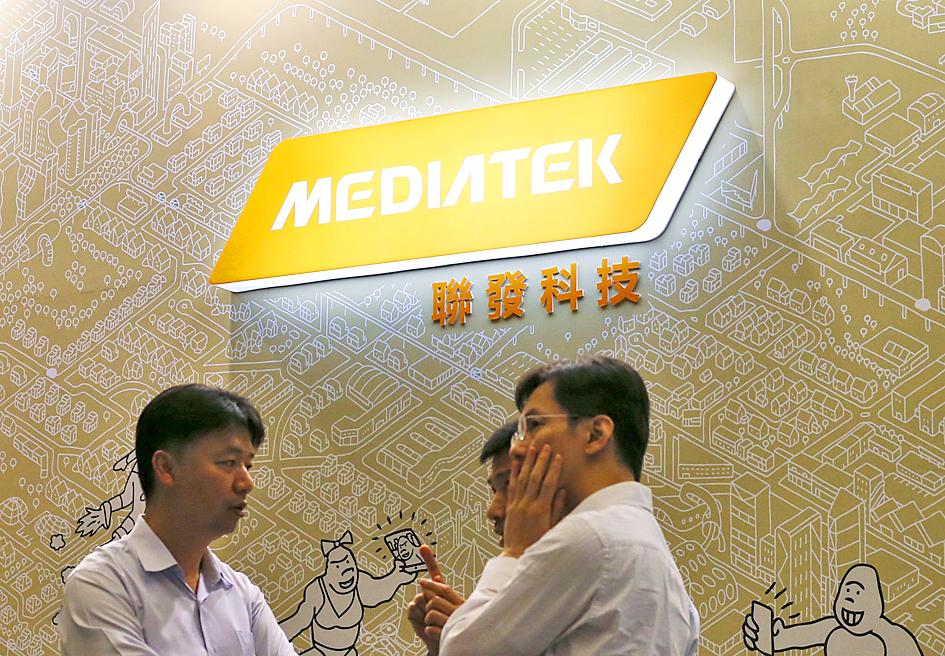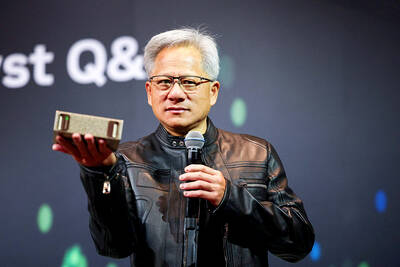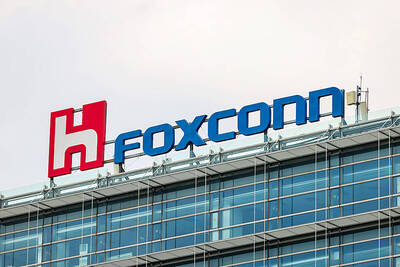Mobile phone chip designer MediaTek Inc (聯發科) plans to launch its first semiconductor chip facility in the US midwest with support from a state transition assistance package from the Indiana Economic Development Commission, the company said on Tuesday.
MediaTek unveiled the new talent development initiative during the SelectUSA Investment Summit in National Harbor, Maryland, following in the steps of silicon wafer manufacturer GlobalWafers Co (環球晶圓), which on Monday announced an investment of US$5 billion for an advanced 12-inch factory in Texas.
MediaTek said in a statement that it intends to form new research partnerships with Purdue University in West Lafayette, Indiana, to collaborate on developing engineering talent, and research on next-generation computing and communications chip design.

Photo: RITCHIE B. TONGO, EPA
The center would be on the university’s campus, the company said.
It has been working with US universities for more than a decade, but this is the first time it has made such a strong commitment that includes a new MediaTek design team on campus, the firm said.
MediaTek operates eight offices in the US, it said.
“We believe strongly that being in Indiana means we will have access to some of the best engineering talent in the world,” MediaTek USA president Lawrence Loh (陸國宏) said in the statement. “In the post-[COVID-19]-pandemic world, top candidates tell us they want to be closer to home, near family, and they want to have a real house and great schools. Indiana offers all that and more.”
MediaTek said it aims to employ as many as 30 top engineers in West Lafayette by 2025 and up to 10 graduate student interns, with the first interns expected to join the new chip design center in May next year.
Globally, MediaTek invested more than US$3.5 billion in research and development last year.

SEEKING CLARITY: Washington should not adopt measures that create uncertainties for ‘existing semiconductor investments,’ TSMC said referring to its US$165 billion in the US Taiwan Semiconductor Manufacturing Co (TSMC, 台積電) told the US that any future tariffs on Taiwanese semiconductors could reduce demand for chips and derail its pledge to increase its investment in Arizona. “New import restrictions could jeopardize current US leadership in the competitive technology industry and create uncertainties for many committed semiconductor capital projects in the US, including TSMC Arizona’s significant investment plan in Phoenix,” the chipmaker wrote in a letter to the US Department of Commerce. TSMC issued the warning in response to a solicitation for comments by the department on a possible tariff on semiconductor imports by US President Donald Trump’s

‘FAILED EXPORT CONTROLS’: Jensen Huang said that Washington should maximize the speed of AI diffusion, because not doing so would give competitors an advantage Nvidia Corp cofounder and chief executive officer Jensen Huang (黃仁勳) yesterday criticized the US government’s restrictions on exports of artificial intelligence (AI) chips to China, saying that the policy was a failure and would only spur China to accelerate AI development. The export controls gave China the spirit, motivation and government support to accelerate AI development, Huang told reporters at the Computex trade show in Taipei. The competition in China is already intense, given its strong software capabilities, extensive technology ecosystems and work efficiency, he said. “All in all, the export controls were a failure. The facts would suggest it,” he said. “The US

The government has launched a three-pronged strategy to attract local and international talent, aiming to position Taiwan as a new global hub following Nvidia Corp’s announcement that it has chosen Taipei as the site of its Taiwan headquarters. Nvidia cofounder and CEO Jensen Huang (黃仁勳) on Monday last week announced during his keynote speech at the Computex trade show in Taipei that the Nvidia Constellation, the company’s planned Taiwan headquarters, would be located in the Beitou-Shilin Technology Park (北投士林科技園區) in Taipei. Huang’s decision to establish a base in Taiwan is “primarily due to Taiwan’s talent pool and its strength in the semiconductor

French President Emmanuel Macron has expressed gratitude to Hon Hai Precision Industry Co (鴻海精密) for its plan to invest approximately 250 million euros (US$278 million) in a joint venture in France focused on the semiconductor and space industries. On his official X account on Tuesday, Macron thanked Hon Hai, also known globally as Foxconn Technology Group (富士康科技集團), for its investment projects announced at Choose France, a flagship economic summit held on Monday to attract foreign investment. In the post, Macron included a GIF displaying the national flag of the Republic of China (Taiwan), as he did for other foreign investors, including China-based